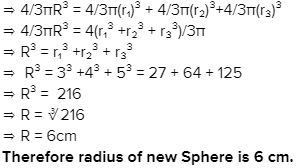KVS TGT Math Mock Test - 3 - KVS PGT/TGT/PRT MCQ
30 Questions MCQ Test - KVS TGT Math Mock Test - 3
Fill in the blank with the correct preposition.
The picture is ____ the wall.
Directions: In the following question, a sentence is given with a blank. You have to fill the blank with one of the words given as options in order to make the sentence contextually and grammatically correct.
Nobody rules out another surge of the diabolical pathogen, but research and resilience have readied us to _______________ better.
| 1 Crore+ students have signed up on EduRev. Have you? Download the App |
Then
P: it struck me
Q: of course
R: suitable it was
S: how eminently
The Proper sequence should be:
Q: of course
R: suitable it was
S: how eminently
Which island in the Andaman and Nicobar Islands is known for its remarkable biodiversity and lush tropical rainforests?
Three out of the four alternatives are same in a certain way and so form a group. Find the odd one that does not belong to the group.
What type of connector is used to plug a telephone line into a modem?
Statement A:- The idea that adolescence is a social construct means that society creates the way adolescence is viewed.
Statement B:- Each culture socially constructs adolescents differently.
Choose the correct statement.
Which of the following can be a way of involving the community in the education process?
I Parent meetings in school.
II. Participation through contribution of money, material and labour
If two angles are said to be supplementary angles and one of the angle is of 122° then the other angle is of
In case of two equilateral triangles, PQR and STU which of the following correspondence is not correct?
Which of the following are the factors of a2 + ab +bc + ca
In a parallelogram ABCD, if ∠A = 115°, then ∠B, ∠C and ∠D are
The least perfect square number which is divisible by 3, 4, 5, 6 and 8 is
Rozly can row downstream 20km in 2 hours, and the upstream 4km in 2 hours. What will be the speed of rowing in still water?
The mode of 4, 5, 6, 8, 5, 4, 8, 5, 6, x, 8 is 8. The value of ‘x’ is
Three solid spherical beads of radii 3 cm, 4 cm and 5 cm are melted into a spherical bead. Its radius is :
An athlete wants to improve his stamina, so he decides to increase the distance he runs by half a kilometer every day. If he starts with 5 km on first day, find how much he runs on the 10 th day




 the supplement = 180o – x
the supplement = 180o – x















